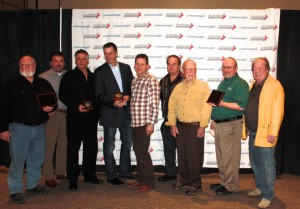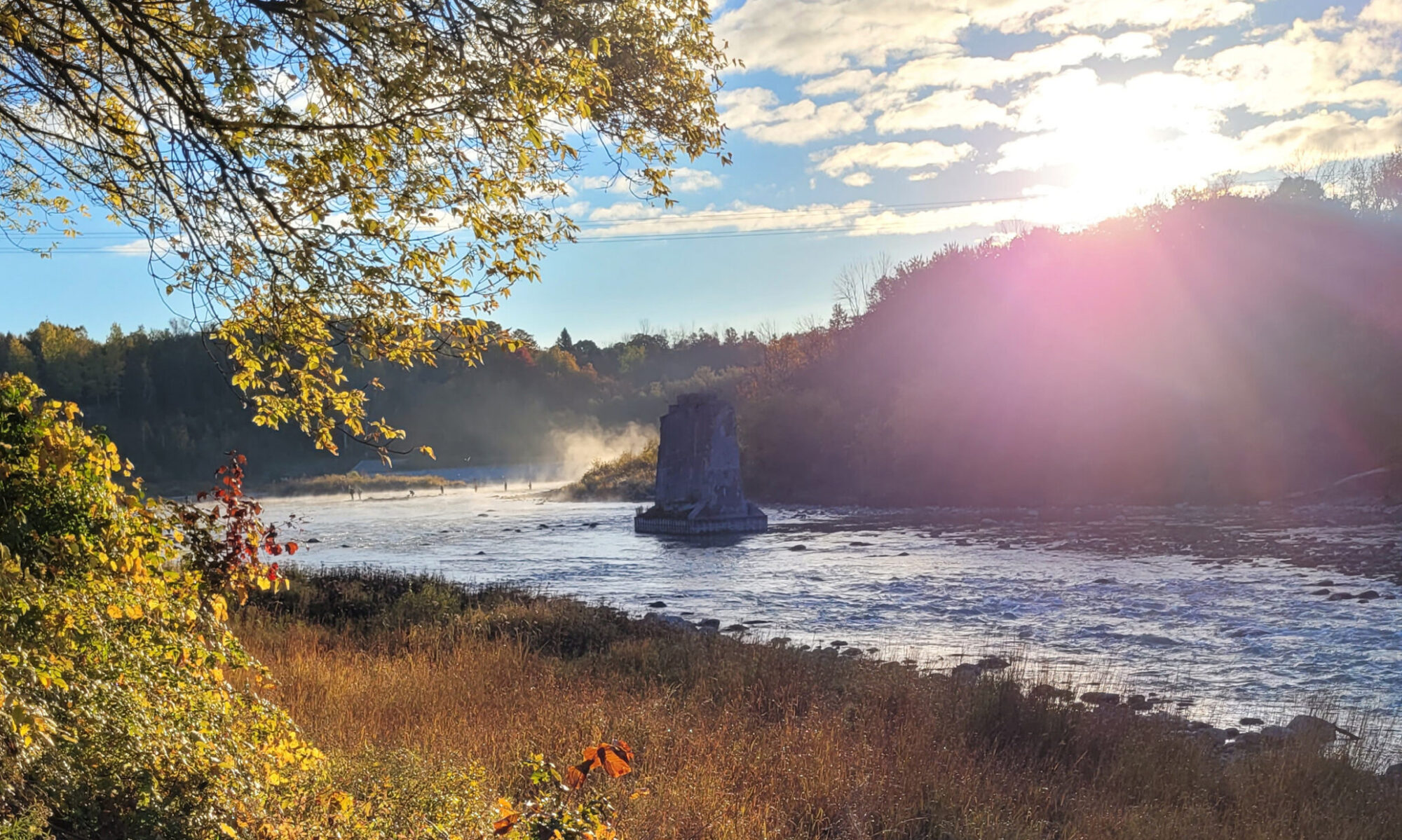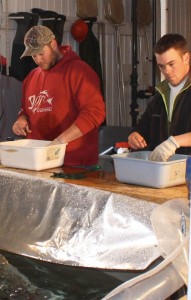While trapped deep in the month of February, local outdoorsmen and women may find it hard to pursue their interests afield or on the water. Extreme cold and massive amounts of snowpack hampers many of the activities to be had in the outdoors. For the soft water angler mid-winter is a lonely time. That being said, snowmobilers, skiers, and snowshoe addicts have found a winter of bountiful opportunities and those who enjoy sport fishing had an avenue to relieve some of the winter blues at the Spring Boat and Fishing Show, which was held last week at the International Centre in Mississauga. It was at this same show that two local organizations were recognized, on a national scale, for their achievements in the sport fishing world.
This past Friday, the Lake Huron Fishing Club and the Ontario Steelheaders were inducted into the Canadian Angler Hall of Fame with receipt of the Conservation Award for their efforts on the Saugeen River. This award acknowledges the tedious work conducted by these two clubs, work which has resulted in the creation of one of the greatest steelhead fisheries on the planet; a fishery that is in the backyard of many readers of this publication, and within a few hours travel time of Canada’s largest population center.

Beginning roughly eight years ago, the Ontario Steelheaders approached the Ministry of Natural Resources and Lake Huron Fishing Club with a plan to undertake a stocking program on the river which would enhance the annual returns of steelhead to the fabled Saugeen. With permission and guidance from the MNR, the LHFC agreed to raise the fish at their Kincardine facility in conjunction with the Ontario Steelheaders. Eggs were (and still are) obtained from adult steelhead captured at Denny’s Dam near Southampton and raised at the hatchery for the first year of their lives. These robust yearling steelhead are then released far up-river near the town of Walkerton, where they are imprinted into the flows of the river. The trout head downstream to Lake Huron and return to the river in following years as the highly prized silver steelhead.
On top of the influx of stocked fish by the two clubs, the Ontario Steelheaders and LHFC members also undertake an intensive adult transport project, which sees adult steelhead trapped at Denny’s Dam in the fall and spring. These adult fish are then transported via tanker to the upper reaches of the river where they are released close to prime spawning water. With 1000 spring steelhead and another 500 adults trucked in the fall, this activity guarantees a number of trout will find prime spawning water come springtime.
In addition to these hands-on projects dealing with fish, the clubs have been instrumental while working with the MNR to repair and create fish passages at the Traux Dam in Walkerton and the Maple Hill Dam near Hanover. In order for fish to reach prime spawning habitat on their own, these man-made structures need to be passable.
Creating one of North America’s finest steelhead fisheries is not easy work. Ontario Steelheader’s member and retired television host Darryl Choronzey was instrumental in seeing the project blossom from the beginning. Choronzey notes, “the potential to create an incredible fishery existed, but we were just missing the right building blocks to have large returns. We started with an annual run of less than 5000 fish, and now our hard work has resulted in a return of roughly 50,000 adult steelhead.” Raising fish and releasing them in a certain manner appears to really make a difference in the outcome of the fishery on the Saugeen. Instead of stocking undersized fry or fingerling trout, the clubs release yearling sized fish, enhancing the survival rate of the steelhead. Stocking the fish far upriver on the Saugeen allows for improved imprinting, which means the trout are able to find their way back to the river once they are adults.
When it comes to raising fish, the Lake Huron Fishing Club has been stocking local waters with trout and salmon for decades. A tour of the Kincardine fish hatchery that the club operates is a sight to be seen. On top of the 50,000 plus steelhead currently inside the facility, there are also a large number of brown trout which provide a productive fishery for anglers up and down the Lake Huron shoreline. The club also operates a salmon hatchery in Port Elgin. Raising fish is not cheap, nor is it an easy task. The LHFC hatchery depends on a number of volunteers to aid in the husbandry of the small fish. Feeding, tank cleaning, sorting, fin-clipping and fish stocking are all duties carried out by the members. With minimal amounts of money being dolled out by the Ontario government to aid in such endeavors, vast amounts of fundraising is required on behalf of the club. The annual Chantry Chinook Classic is a prime example.
LHFC vice-president Mike Hahn was at the awards ceremony and said, “so much work goes into this project, such as raising the fish, transporting adult steelhead and major works to fishways on the Saugeen’s dams above Denny’s, it is hard to fathom what we have accomplished”. Ontario Steelheaders president Karl Redin was quoted “working in conjunction with the MNR and LHFC has produced results that are something to proud of, our steelhead fishery on the Saugeen is second to none and a true reflection of our hardwork”. Choronzey also announced his pleasure in the teamwork atmosphere that has formed on the Saugeen stating, “working along side the LHFC and the MNR has really paid off and this is a perfect example of what is possible with a close partnership, creating a fishery for anglers that is unmatched elsewhere and should be used as a model in other parts of the province”.
Not to be forgotten, the local MNR has played a major role in this success story. Local Fisheries Specialists, biologists, and managers have been able to work closely with the recognized clubs in order to achieve the dream set out by the Ontario Steelheaders. Permitting large fish stocking activities and repair and construction of fishways is no walk in the park, plenty of planning and science is undertaken on behalf of the MNR. To add to the achievements on the river, the MNR is now raising additional steelhead for the Saugeen river at their Chatsworth fish culture facility. An added 35,000 steelhead raised by the MNR will be stocked into the Saugeen this spring, to compliment the same number released by the MNR last year. This brings the annual plants of steelhead on the Saugeen above 80,000 combined by the partners involved.
The Ontario Steelheaders and The Lake Huron Fishing Club received some much deserved recognition at the Canadian Angler Hall Of Fame Awards. These local clubs have done work which rivals any other comparable endeavor in North America and have carefully cultivated one of the best steelhead rivers I’ve ever fished. If the winter has us anglers a bit blue, just remember, the Saugeen is ready when you are.


